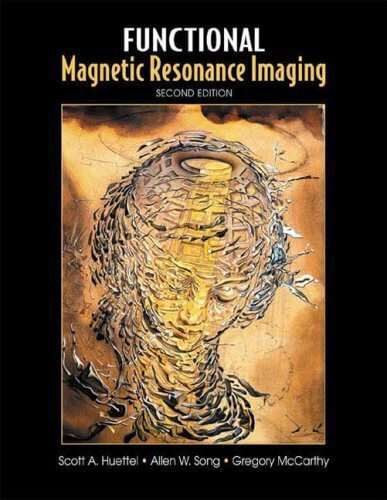This post is part of a larger deep dive
Curious about the role of the WWII atomic bombings in Raphaelesque Head Exploding? Check out Raphaelesque Head Exploding explained!
Or read the full Raphaelesque Head Exploding article!
This post is part of a larger deep dive
Curious about the role of the WWII atomic bombings in Raphaelesque Head Exploding? Check out Raphaelesque Head Exploding explained!
Or read the full Raphaelesque Head Exploding article!
Artist: Salvador Dalí
Year: 1951
Medium: Oil on wood
Location: Scottish National Gallery of Modern Art, Edinburgh, UK
Dimensions: 43.2 x 33.1 cm
Original Title: Tête Raphaèlesque éclatée

Our rating

Your rating
When I was starting out my career, I came across the book Functional Magnetic Resonance Imaging by Scott Huettel and collaborators.
And there was something that immediately caught my attention:

This cover had always intrigued me. Whose head is this supposed to be? Why does it look fragmented? Does the hole have sexual connotations, like some of Dalí’s other paintings? Why have the authors/publisher chosen this particular image?
Being a neuroscience book covering multiple fields (from physics to the analysis of human fMRI studies), I thought the authors/publisher may have used it given Dalí’s interest in the mind, particularly the subconscious mind.
I did little at the time to search for an actual interpretation of this painting, but I surely felt immediately drawn to it. Still to this day, Raphaelesque Head Exploding remains one of my favourite surrealistic works… ever!
Sadly (or maybe not), from the 3rd edition of the book the publisher changed the cover to another of Dalí’s works: Maximum Speed of Raphael’s Madonna, a painting completed 3 years after Raphaelesque Head Exploding.
Recently I was perusing my library and came across that old companion book, reviving my interest in this painting.
So, let’s learn what it is all about!
Setting aside the grotesque title, Raphaelesque Head Exploding is a masterpiece to behold.
The entire head is made up of what looks like fragments of unspecifying objects. A ray of light shines through a hole at the top of the head, the interior of which appears to be the cupola’s interior of the Pantheon of Rome.
Despite the fact that the face is barely visible, one cannot but notice a certain beauty of the facial features: an almost motherly and affectionate pose, gentle lips and a hint of a smile.
Like some of Dalí’s other works (e.g., The Anthropomorphic Cabinet), Raphaelesque Head Exploding is parsimonious in its use of colour. A markedly warm and earthy golden ochre permeates the entire canvas, as though we were looking at an ancient papyrus.
Still, the painting has an incredible dynamism. Not only does the disposition of the fragments give the impression of floating around the face, but also the light beam appears to be penetrating the head from the opening at the top.
A wheelbarrow is shown at the bottom left of the painting, a curious addition given the otherwise sober and controversial theme of the painting, the cataclysmic destruction by nuclear weapons.
The woman’s face is most likely a representation of the Madonna as envisioned by Raphael, hence the title.
Dalí is one of my favourite surrealistic painters, and Raphaelesque Head Exploding probably my favourite work of his. The intricately detailed painting, the illusion of gracefulness and the softness of the face, despite being made up of chaotic fragments, is nothing short of brilliance.
As we will see below, Dalí played with contrasts, and the effect was simply astonishing. Joy and sadness, pleasant and unpleasant, safe and dangerous are feelings that, to a certain extent, are all expressed in this unique work of art.
Dalí’s fondness for science and the thematic controversy of the painting also surely contributes to giving the painting that extra appeal.
Raphaelesque Head Exploding gets a well-deserved star rating of 5.
Like most of Dalí’s works, Raphaelesque Head Exploding is, indeed, very bizarre.
However, despite this agglomeration of surreal elements, Dalí did provide clues as to what these different elements represent.
For this reason, art pundits have been able to, more or less, piece together the meaning of the painting.
In any case, given the very surreal appearance of the painting this work gets a bizarrometer score of 4.5.
As the name implies, Raphaelesque Head Exploding depicts an explosion of a head based on Raphael’s artistic vision.
Why the gruesome title?
Well, Dalí was living in the US when he learnt about the devastating effects of the atomic bombings of Hiroshima and Nagasaki. It awakened in him not only a certain apprehension regarding human’s potential for destruction, but also a certain obsession with scientific progress.
Hoping to fulfil his vision to reconcile science and religion, he coined the term “Nuclear Mysticism” to refer to works that drew on both religious and scientific views. Raphaelesque Head Exploding is one of such works.
The face is made up of fragments which are likely a representation of the debris created by the nuclear blast of an atomic explosion, and/or a vortex of sub-atomic particles which make up all matter. The suggestion of a halo and clouds above the head visually symbolise the atomic explosion.
The central subject of the painting resembles the face of Raphael’s Madonna (hence the title). The serene and motherly facial expression contrasts heavily with the destructive and lethal consequences of nuclear weapons as represented by the fragments, halo and mushroom cloud.
The interior of the head is covered by coffered panels resembling those on the ceiling of the Pantheon of Rome, a site of worship and connection to God (or gods). With this detail, Dalí may be implying a god-like faculty of harnessing the power of the atom.
Finally, the oculus, the small opening on the top of the head (which is also a defining feature of the pantheon) lets light into the interior of the head, symbolically, relating to the very bright light emitted shortly after a nuclear explosion.
As usual, before we delve into a more detailed interpretation of this painting, let’s go over a few facts that led to the atomic bombings on Japan during WWII, as well as an overview of the nuclear physics that made the construction of those bombs possible.
Leave a comment
Add Your Recommendations
Popular Tags